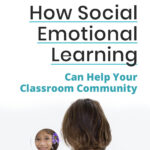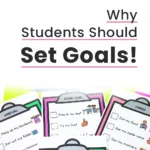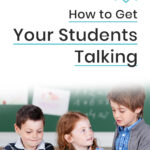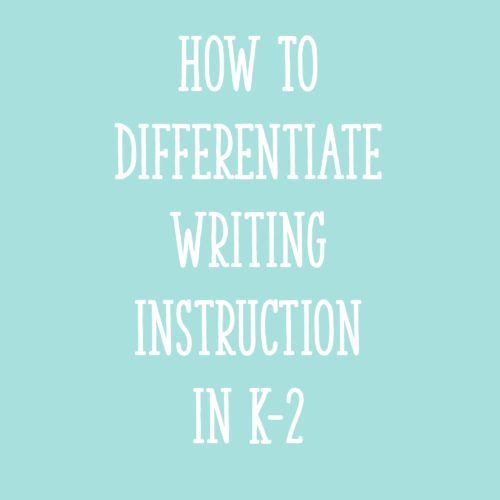Building classroom community is vital! By building a classroom community, we hope to help students feel welcomed, safe, and valued. This will help them feel comfortable taking academic risks and contribute positively to learning! Every teacher wants this for their students – but what does it actually look like to build classroom community?
Building classroom community isn’t something that happens overnight. It’s not like on the first day of school you can just say “All right, 1st graders, today’s lesson objective is to build classroom community!” and then voila, you have it! On that same note, it’s not something that is ever fully “reached.” Instead, it’s an ongoing process, that must happen daily, in order for it to be authentic and successful. Even classrooms with a very strong community always have room for improvement!
Although there isn’t necessarily a step-by-step process to achieve the “perfect” classroom community, I do have some impactful, easy-to-implement ideas in this blog to help you build classroom community with your students.
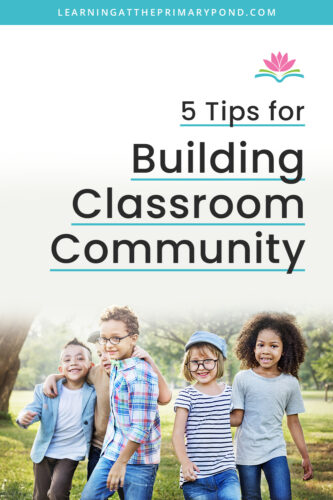
5 Tips for Building Classroom Community
As I noted above, classroom community isn’t something that is created in just one lesson, day, or week. A sense of community is built upon small daily actions. If you want to prioritize community, you have to make time for it!
Tip #1: Have daily check-ins and conversations.
For students to feel a sense of belonging, they need their voices to be heard. As humans, we tend to be kindest to and invest in those we know more about! One way to accomplish this is to have purposeful daily check-ins. This can come in many forms. Here are a couple of ideas:
- Have a “question of the day” so that students get to know one another. I used to start our carpet time some days with a “What’s your favorite…” type of question. It could be something simple like “What’s your favorite pizza topping?” or a question with a bit more depth such as “What’s one trait that makes you a good friend?” I always have students do a quick turn and talk with a partner, so that everyone gets to share. Then, I usually choose 2-3 kids to share out (different students each day!) As an added push, I ask whomever I call on to share what their partner said. This helps them work on really listening to one another.
- Start the day with a “class meeting.” You may have a formal curriculum or resource to follow, depending on your school. If you don’t already have something in place, consider adding in a brief meeting. It’s a good time to do a check-in with students, reflect on the day before or their mornings before school, and talk about the day ahead.
- Throughout the day, do a simple “pulse check” as I like to call it! Even just a “Give me a quick sign for how you’re feeling right now – thumbs up, thumbs to the side, or thumbs down.” If you’re able to stay in tune with how your students are doing, the classroom as a whole will feel more cohesive.
Tip #2: Utilize partner work!
If you’ve read some of my other blogs, you know I’m a big fan of partner work! There are so many benefits (read more about them here: Why Is Partner Work Important? How Do You Set It Up Successfully?), but one of the biggest “wins” is that it provides students with positive interactions.
I recognize that not every student needs to be every other student’s very best friend. Yet, in simplest form, everyone needs to get along, respect one another, and value each other’s strengths and differences. Having opportunities for partner work throughout the day can facilitate these understandings between kids.
One of my favorite ways to incorporate partner work is to have “clock buddies.” This makes partner work so much easier to set up! It also allows students to work with a variety of students, which really helps build up the community (especially the 9:00 time!) The gist is that kids have specific partners at each time. To start the year, I usually just do 12:00, 3:00, 6:00, and 9:00 times. I assign 3 out of 4 times, and students get to choose their partner for one of the times. I use the four points below as my guide.
- 12:00 – Peers who are at similar levels academically → Students should have opportunities to work on the same skills with their same-ability peers.
- 3:00 – Peers who are at different levels academically → Students can learn from each other in mixed-ability pairings.
- 6:00 – Peer choice → Sometimes it’s fun to work with a pal, right??
- 9:00 – Peers who maybe don’t always get along or choose to interact with each other → Partner work can provide tools to help develop these relationships!
Depending on the activity, you can tell students who they’re working with. (i.e. “Students, for this next phonics game, you’re going to work with your 12:00 partner.”) Students have this actual clock sheet in their desks with names written on it, so when I say “12:00 partners,” they can pull out their sheets to check who their 12:00 partner is as a reminder.
Tip #3: Have systems in place for when someone is having a rough or hard time.
We all have our good days and our not-so-good days. The same is of course true for our students – they are humans after all! Instead of being surprised and flustered if a student is struggling, set up systems ahead of time to help use these moments as a time to build community.
For example, if a student needs a break for whatever reason, have a safe, quiet cool down area set up in the classroom. This could have coloring sheets, a journal to write in, some stuffed animals, etc. Having a space like this shows students that the classroom itself is all-encompassing and accepts them for who they are, even when (and especially when!) they might not be at their best. You could even have a designated student job where someone knows to head over to check on the student in the cool down area after a few minutes.
On this same note, I saw something really neat recently at a local school during recess time! On the playground, there was a special bench. This one in particular was painted bright orange and actually had the words “Buddy Bench” printed on it. What this signified was the true definition of building classroom community! If, at any time, a student wants someone to talk to or play with, he/she can sit on the “Buddy Bench.” The teachers have taught all students to keep an eye out for any students sitting there. So, if a kid sees another kid sitting there, they know to run over and check-in to see what’s needed.
These things help teach students to be comfortable showing their emotions and also how to show compassion and empathy for others – important characteristics for building classroom community!
Tip #4: Use language to help build classroom community.
This is a “small, but mighty” piece of advice! When addressing your students, try to do the following:
- Use “we” and “our” instead of “you” and “your” – i.e. “We have a lot of hard work to get done today! Let’s get started!” instead of “You need to work hard today. You should get started.” It’s very impactful for students to see themselves as part of a group.
- Have a classroom name to easily identify your group! For example, I know of a school where every classroom chose a college and mascot to identify by. So, the “Michigan Wolverines” classroom was decorated to match this theme, and the students had a special day where they could sport their “team” colors! The teacher referred to them as “Wolverines.” Doing this made them feel part of something bigger, working toward that sense of belonging.
- Acknowledge when things are hard but students persevere! If there is a student who doesn’t normally share out, but takes a chance and raises their hand, you could say something like “Awesome job being a risk-taker!” That language is so powerful in building up one’s self-esteem. Having students hear you give compliments will eventually teach them how to do the same.
Tip #5: Model JOY, and your scholars will see this and emulate it!
In the teaching world, the days can feel long. The weeks can seem never-ending. Ultimately, though, it’s your passion and joy for helping students that keeps you coming back. Don’t ever forget to have fun and make learning exciting!
I used to work with a teacher who was just plain old silly with her students. She had nicknames for everyone, dressed in goofy costumes ever so often (I bet her students from 10 years ago still remember the day she showed up in a unicorn costume!), and did everything she could to make learning fun. Because students enjoyed being around her, they loved being in school! They also knew when it was time to focus and be serious about academics. Her students always grew leaps and bounds!
We don’t all have to be this exact teacher. (In fact, I’m not – I have a totally different approach to making learning fun!) But the lesson here is that students are more willing to learn and care for others when they are feeling joy and having fun. There are endless ways to make your classroom a place your students want to be. Here are a few ideas:
- Take brain breaks where students can dance, move around, and just act like kids! Don’t forget to participate, too 🙂
- When a student does something great, do a little class cheer for them! The “karate chop” is one of my favorites. “Students, karate chop for Lev on the count of 3 – 1, 2, 3 – ‘Hiya, hiya, great job!'” Something like this takes less than 10 seconds but it just adds in a bit of necessary fun!
- Smile. Yep, SMILE! You’d be surprised how often stress resonates on our faces, which in turn rubs off on students. Breathe, and smile! 🙂
- Add in drama or humor when you can! Maybe it’s a monthly Reader’s Theater play. Or let one student tell a joke each day! Whatever it may be, adding in a little flair can help improve that community feel!
Conclusion
Building classroom community can be a lot to take on, but it’s critical to having a positive environment! It definitely takes work to build up your classroom community, but it’ll be worth it when you see friendships forming and smiles on your students’ faces!
I’d love to hear in the comments about other things you’ve done in your own classroom to build classroom community!
Happy teaching!

